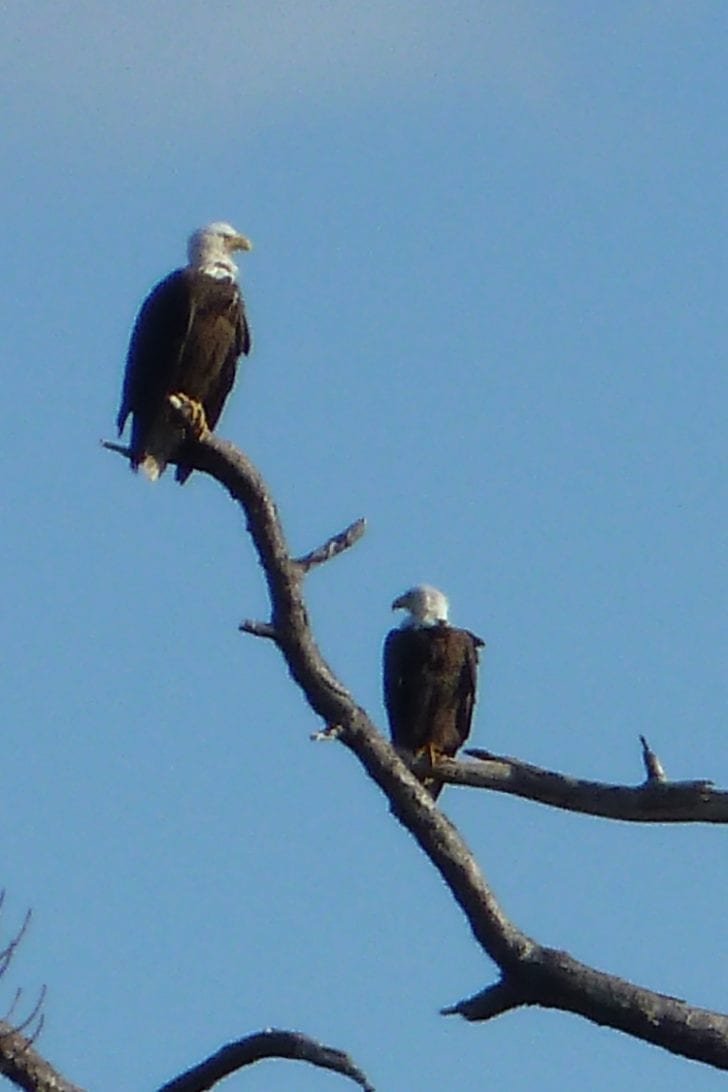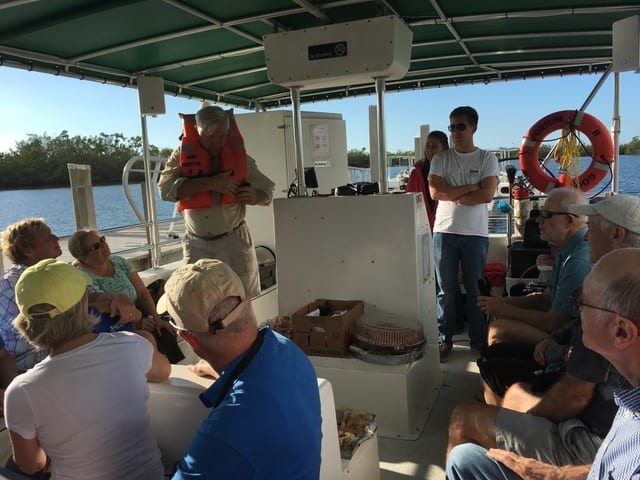By Dr. Judy Hushon, Conservancy of Southwest Florida board member and volunteer naturalist
The Conservancy of Southwest Florida’s eco-cruise tour aboard the Good Fortune II makes two trips a day into Rookery Bay. Conservancy naturalists help passengers understand and enjoy the rich nature that is on display. With the weather starting to change, the birds are preparing for their active season of nest building, laying eggs and rearing their young. With no hurricanes this season, last year’s nests only need some shoring up and relining and many of the birds have already begun this process.

Our eagles in Hall Bay usually lay their eggs in December and they hatch about a month later. Both eagles have been seen flying around and roosting in the tree where their nest is located. Some osprey are also preparing for an early nesting season. Traditionally, they have not nested until late January, but several pairs are definitely putting finishing touches on nests located on channel markers, which keep the snakes and raccoons away. This may be a by-product of global warming, since their greatest stressor is heat at the end of the season before their babies have fledged.
The wading birds are also starting to migrate to Rookery Bay from the Everglades, especially since this has been a dry fall and the Everglades will be drying out. They typically collect along the roots of the red mangroves and wait for small fish to appear. So far, we have seen great blue herons, great egrets, snowy egrets, reddish egrets, little blue egrets, cattle egrets, tricolor herons and on one evening cruise we saw a couple of roseate spoonbills flying over. On one morning cruise, we caught sight of a black–crowned night heron looking for a final treat before his daytime nap. Most of these wading birds, except for the night heron and the great blue heron come to the rookery island at night.
The oyster catchers have returned and are regularly seen feasting on the coon oysters on the oyster mound at the entrance to Hall Bay. They are typically at the edge of the water where the oysters are opening to filter the water. They reach in with their strong bright orange beaks and clip the muscle that holds the oyster shell before eating the meat inside. The oyster catchers migrate north during the summer and only return to Southwest Florida in the fall.
There have also been a lot of dolphins around Rookery Bay. We have seen a number of mothers with small babies, probably still nursing. Last week, we were treated to a feeding frenzy in very shallow water, after which the five dolphins involved slowly swam off to find more fish. The dolphin sightings are almost like taking a Disney jungle ride as they appear and actually swim under and around the boat.
The evening show at the rookery island is visible every night. In the half hour before sunset, 1,500 to 2,000 birds flock to a small island only about 120 feet in diameter that is covered with mangroves. During the day, you can see brown pelicans and double crested cormorants digesting their previous meals, but at night, everyone joins in the party. There are flocks of up to 100 ibis at a time, armadas of pelicans flying in formation, little blue herons slipping into the foliage never to be seen again and of course all of the other birds that hang out in Naples and Rookery Bay during the day. The unwritten rule is that you have to be at the island before sunset so the birds arrive in swarms. This process is also noisy and there definitely is a pecking order. Later-arriving birds will take places occupied by already roosting birds, but not without a noisy altercation and this goes on constantly for the half hour before sunset.
To book your cruise aboard the Conservancy’s Good Fortune II call 239-213-2500 or visit www.conservancy.org/goodfortune.


